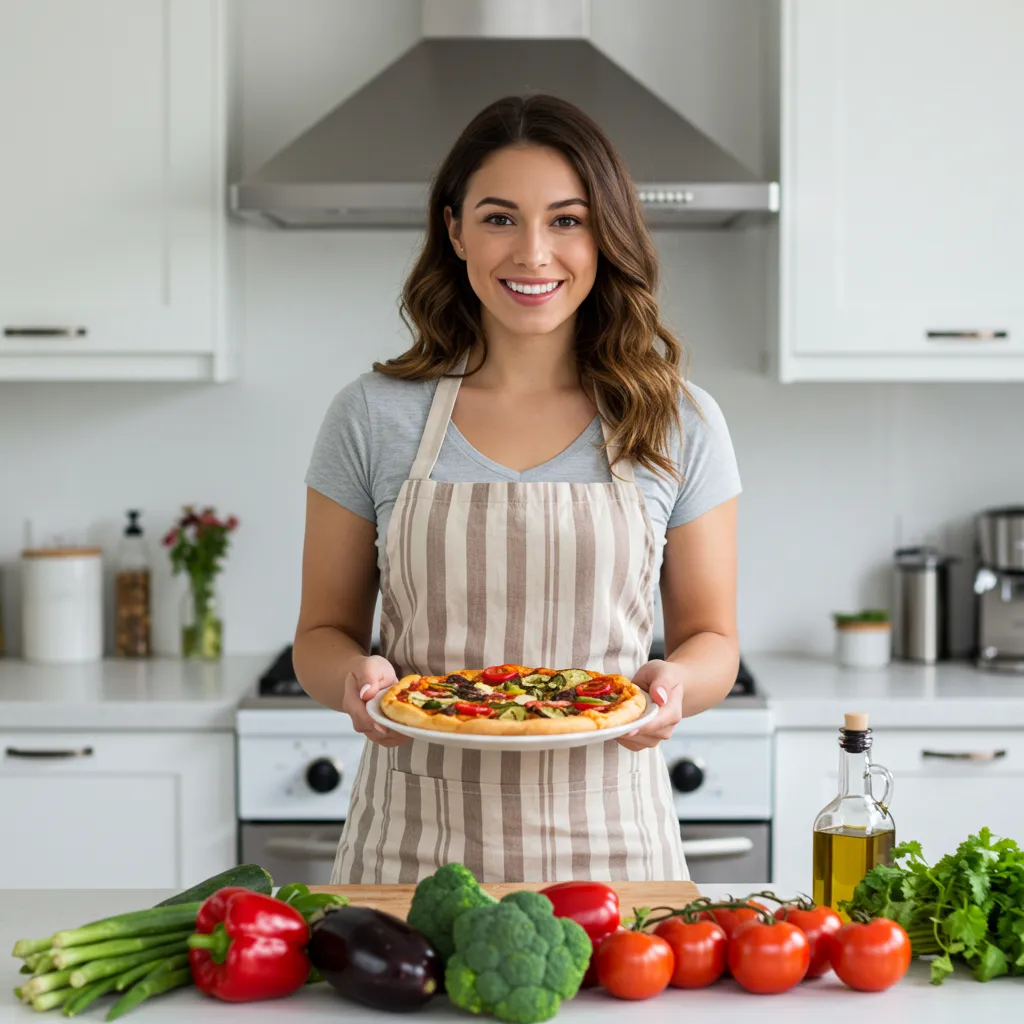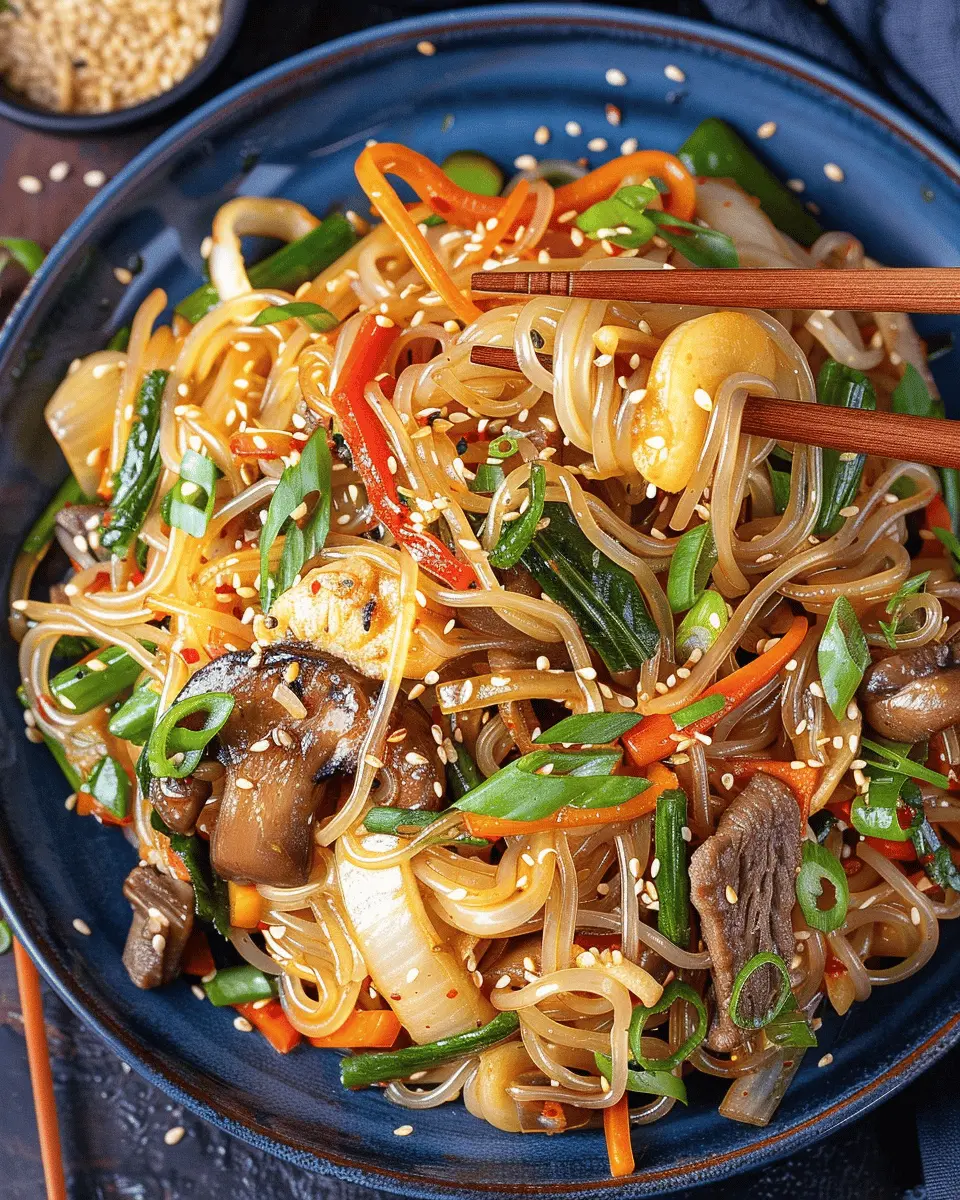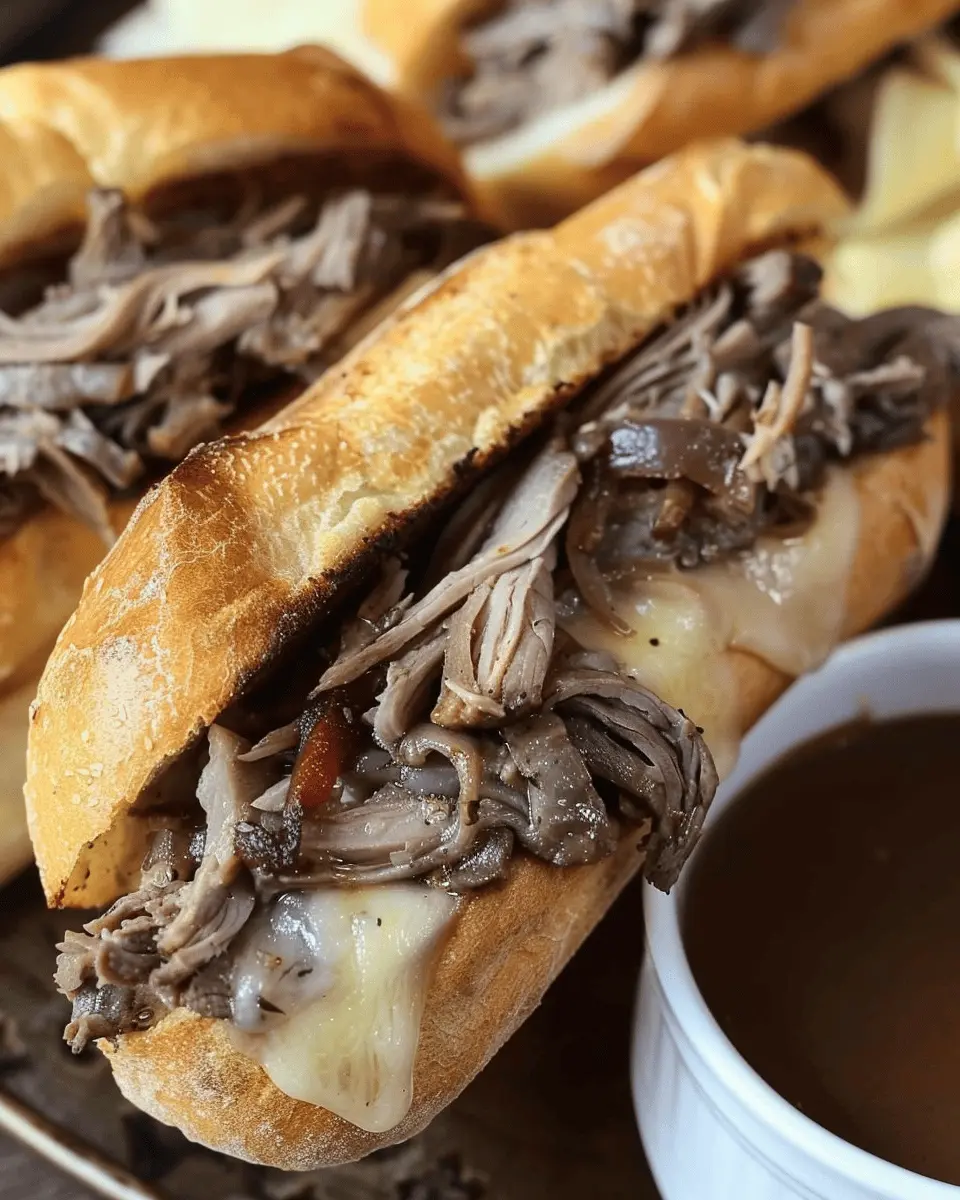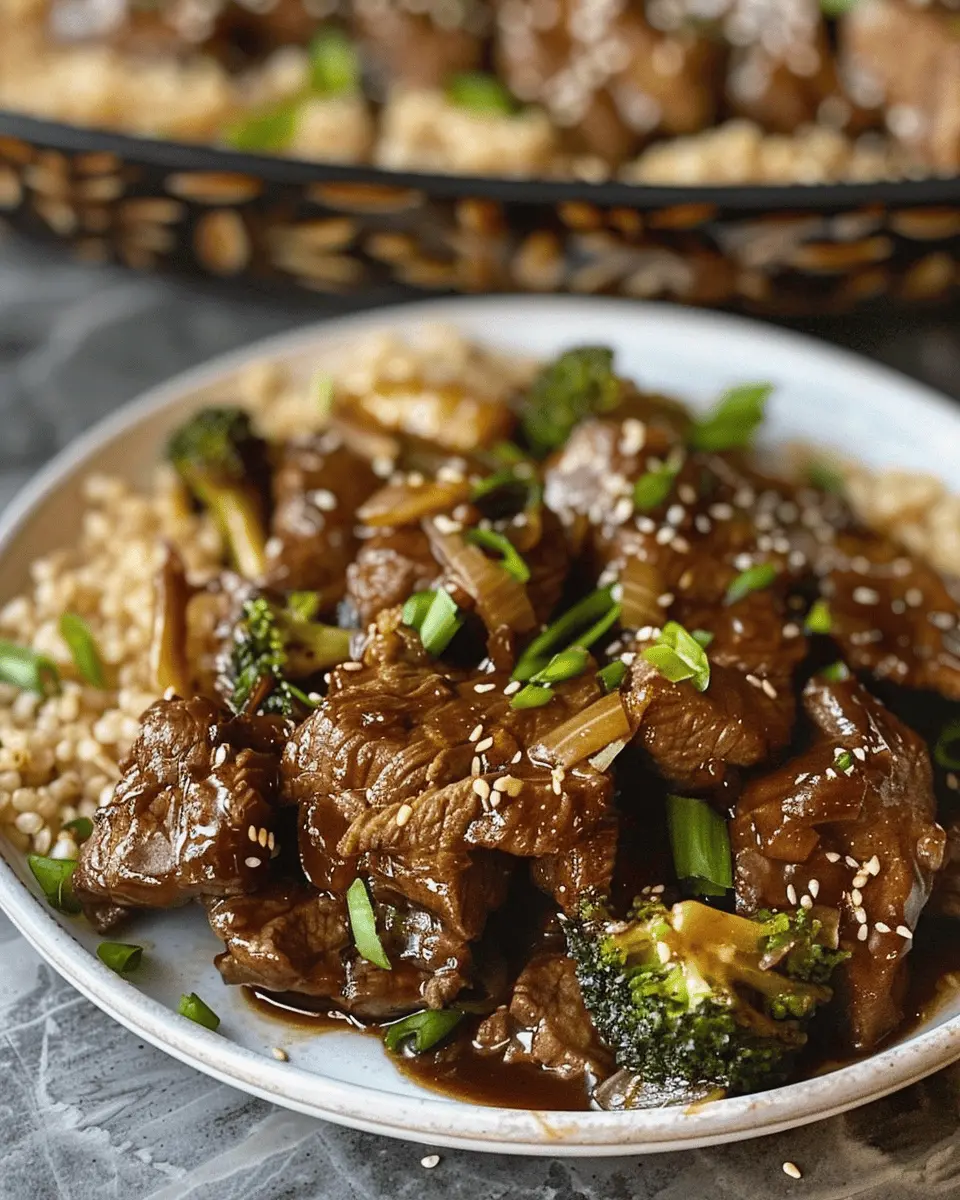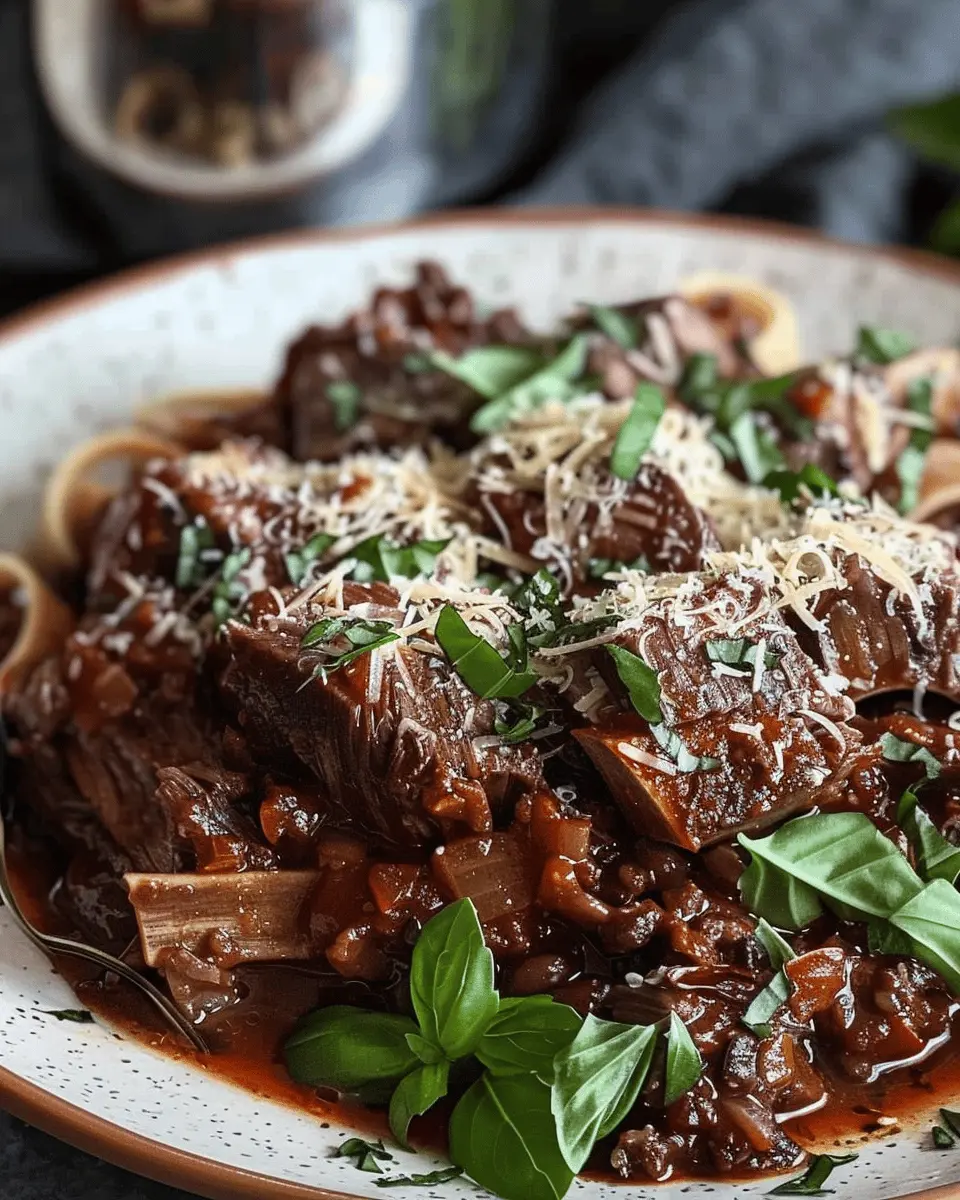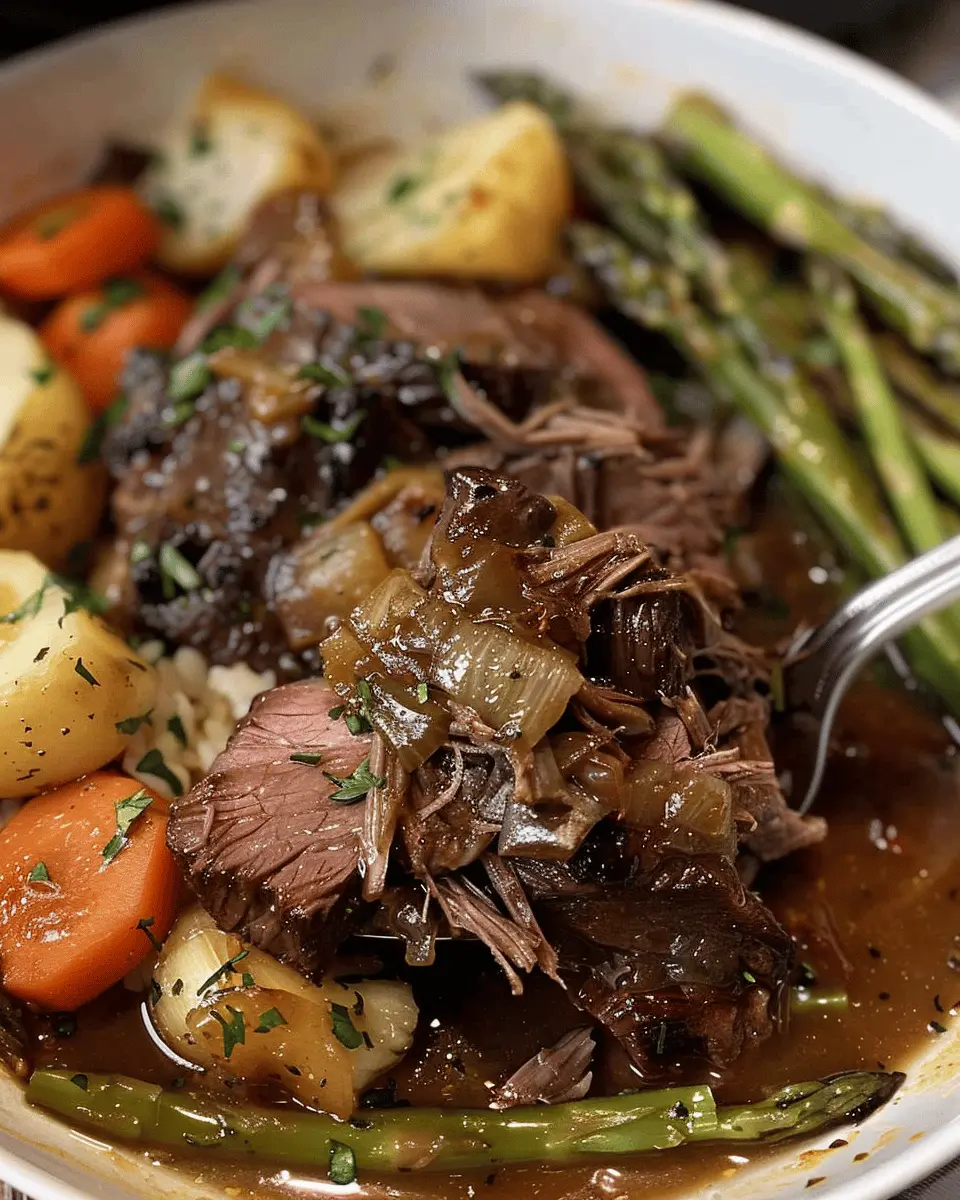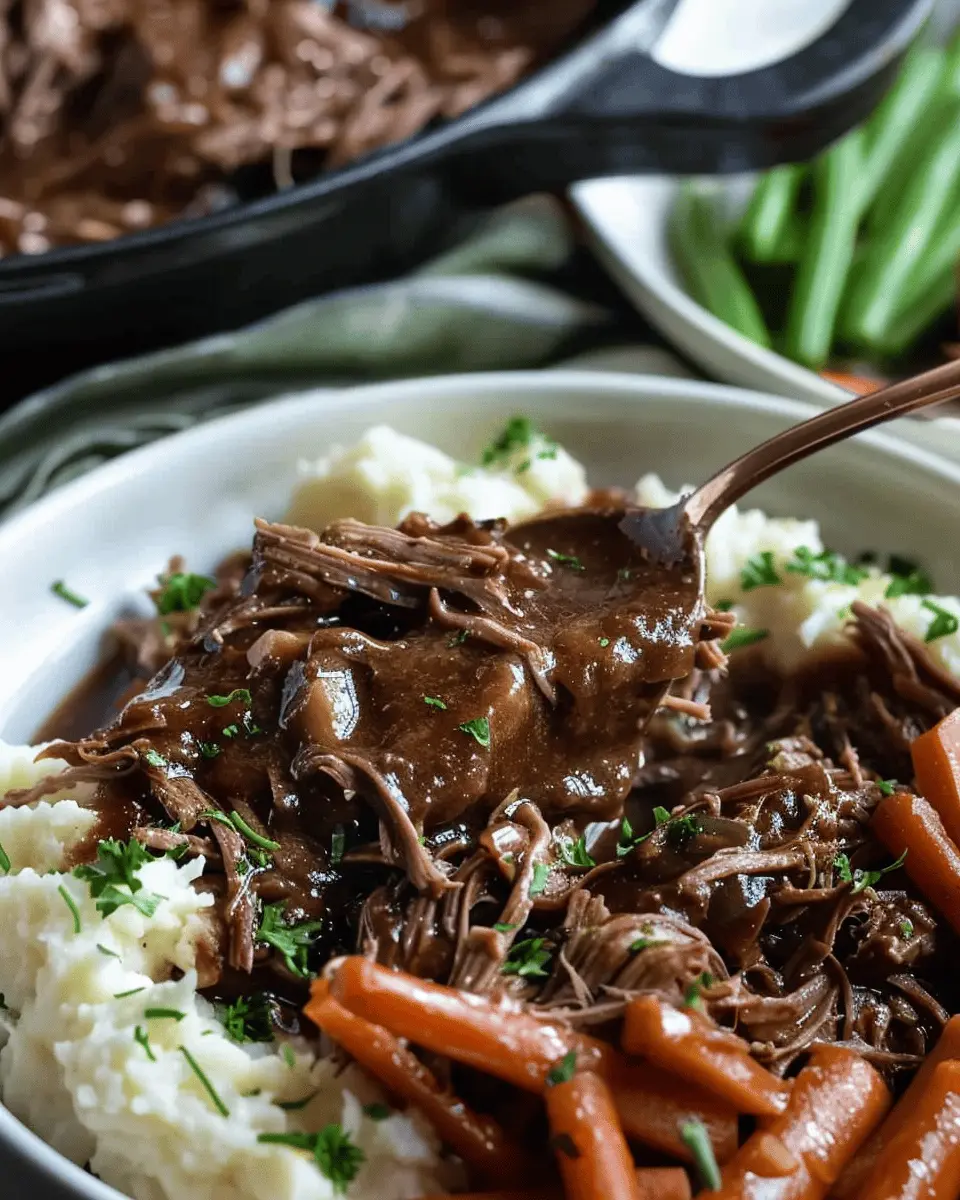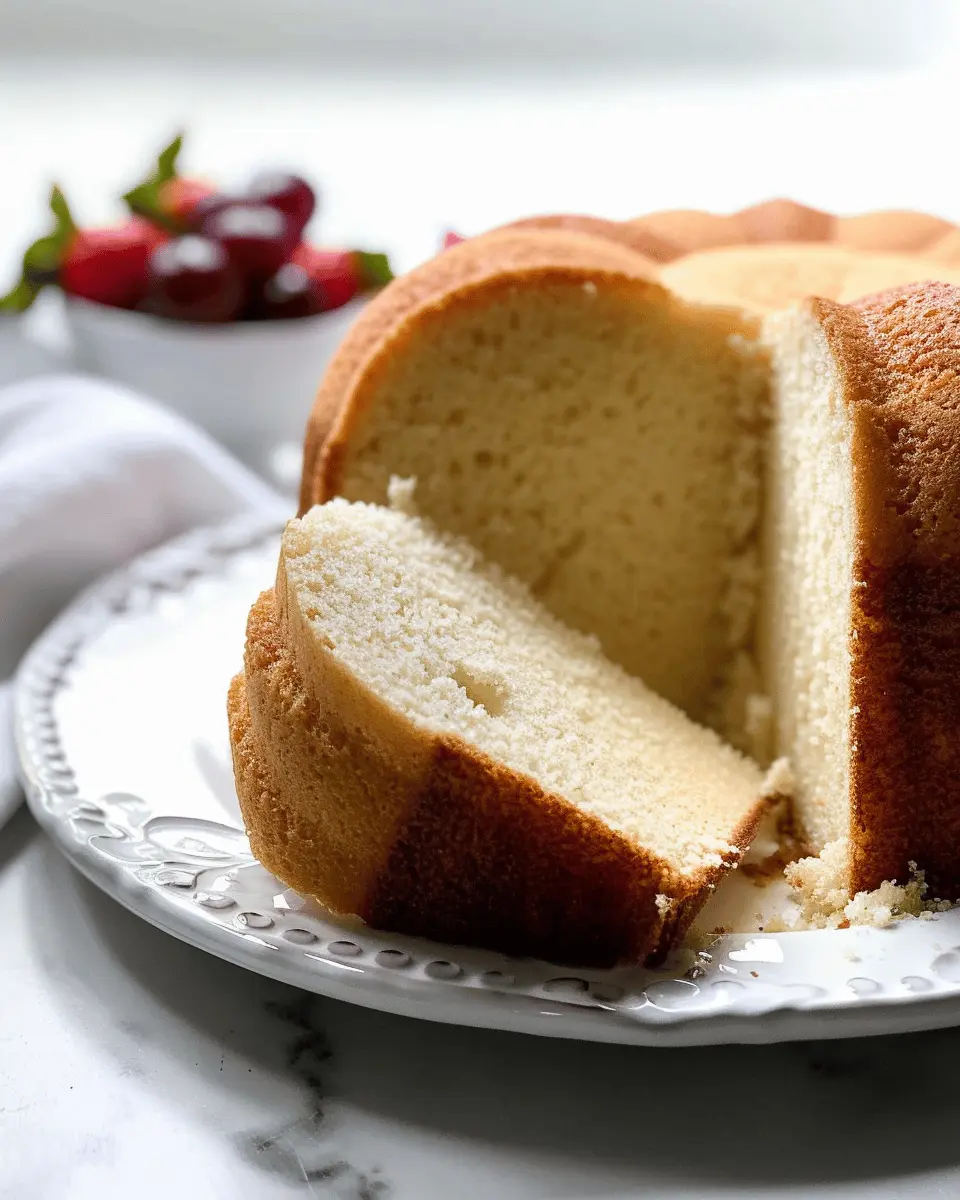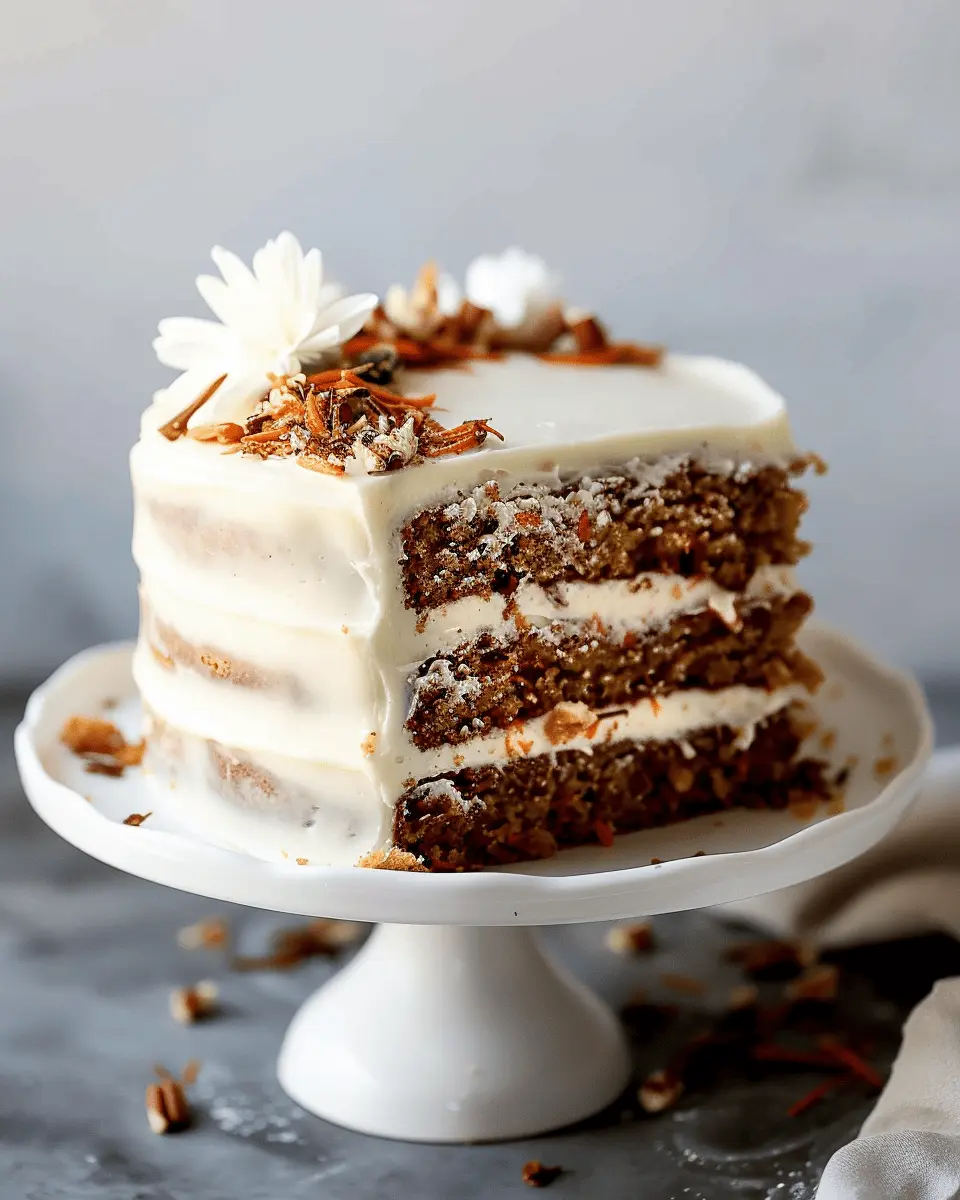Introduction to Korean Glass Noodles
What are Korean Glass Noodles?
Korean Glass Noodles, also known as dangmyeon, are a delightful staple in Korean cuisine made from sweet potato starch. What makes these noodles particularly special is their translucent appearance when cooked, which gives them the “glass” designation. Unlike traditional wheat noodles, Korean glass noodles are naturally gluten-free, catering to those with dietary restrictions while still delivering a satisfying texture.
These noodles have a unique chewy consistency that enhances various dishes, soaking up flavors beautifully. You can find them in popular recipes like Japchae, a stir-fried dish packed with vegetables and protein, or even as a base for salads. The versatility of Korean glass noodles means they readily adapt to different ingredients, balancing well with both savory and spicy flavors.
When cooked, Korean glass noodles become slightly sticky, which helps them hold sauces and seasonings remarkably well. Do you enjoy the kind of comfort that comes from a warm bowl of noodles? You’re not alone! According to a survey from the Korean National Agricultural Cooperative Federation, dangmyeon is one of the most loved ingredients in Korean households, often featured in family meals and gatherings.
How to Prepare Korean Glass Noodles
Getting started with Korean glass noodles is straightforward, and you can often find them at local Asian grocery stores or online. Here’s how to prepare them:
-
Soak: Start by soaking the dry noodles in warm water for about 30 to 60 minutes until they soften. This step is crucial for achieving the perfect texture.
-
Cook: After soaking, drain the noodles and then briefly cook them in boiling water for about 3 to 5 minutes. Be careful not to overcook, or they might become mushy!
-
Use in Dishes: Once cooked, toss them in your favorite stir-fry, salad, or even use them as a filling for wraps. The options are endless!
Whether you are experimenting with flavors or looking for a new ingredient to love, exploring Korean glass noodles might just lead you to your next favorite dish. With their unique texture and ability to absorb flavors, they’re not just a food—they’re an experience waiting to unfold in your kitchen!
For a deep dive into creating exquisite Korean dishes, check out more about Korean cuisine at Maangchi, a fantastic resource for Korean recipes and cooking tips!
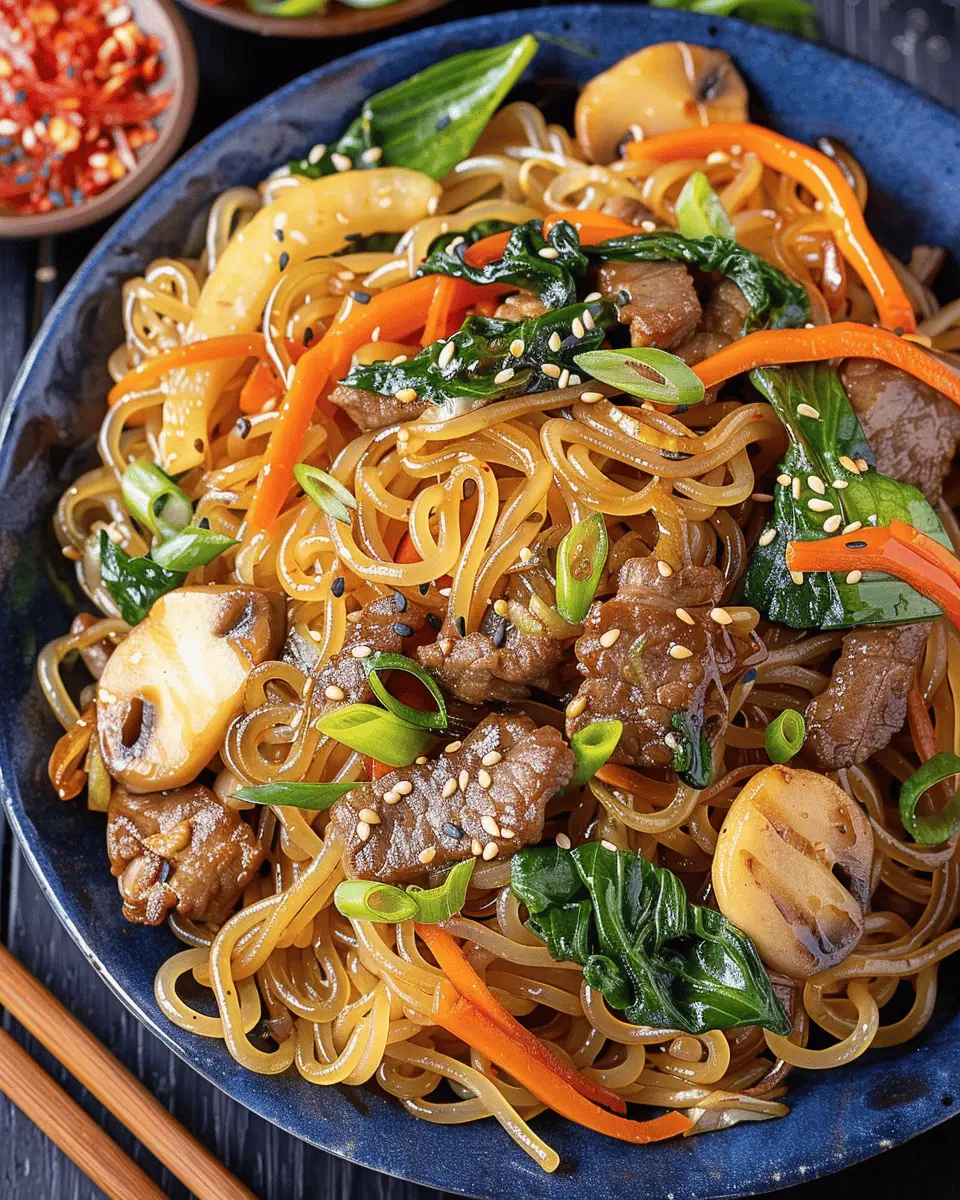
Ingredients for Japchae (Korean Glass Noodles)
Essential ingredients
To whip up a delicious serving of Korean Glass Noodles, you’ll need a few key ingredients that make this dish a flavorful experience:
- Sweet potato starch noodles: These are the star of the show, providing that signature chewy texture.
- Vegetables: Common choices include spinach, carrots, and bell peppers; feel free to mix and match based on what you love!
- Turkey bacon or Chicken ham: For that extra savory punch, these proteins can really enhance the dish.
- Soy sauce: This adds depth with its umami flavor.
- Sesame oil: A drizzle of this gives a lovely fragrance and richness.
- Garlic: Essential for flavor – a must-have in any good Japchae.
Optional ingredients for personalization
The beauty of Korean Glass Noodles lies in their versatility. Consider adding:
- Mushrooms: Enoki or shiitake can elevate the taste and nutrition.
- Eggs: A soft scramble or a delicate omelet on top can add creaminess.
- Other proteins: Think tofu for a vegetarian twist, or beef for a heartier version.
By experimenting with these extra ingredients, you can make the dish truly your own. Explore variations and see what flavors resonate with you! For more insights on ingredient selection, check out resources like Korean Bapsang. Happy cooking!
Preparing Japchae (Step-by-Step Instructions)
Japchae, a beloved Korean dish featuring Korean glass noodles, is a vibrant medley of flavors and textures. As you prepare this dish, you’ll find the process to be both enjoyable and rewarding. Let’s dive into the steps to create this delicious meal!
Marinate the beef
To start off, let’s focus on the beef. Marinating enhances its flavor and tenderness—key elements for a successful Japchae. Use about 8 ounces of thinly sliced beef, ideally flank steak or sirloin. Here’s a simple marinade:
- 2 tablespoons soy sauce
- 1 tablespoon sugar
- 1 tablespoon sesame oil
- 1 clove garlic, minced
- Freshly ground black pepper
Instructions:
- Combine all marinade ingredients in a bowl.
- Add the beef, making sure each slice is coated.
- Cover and let it marinate for at least 30 minutes. If you have more time, letting it sit in the fridge for a few hours will significantly enhance the flavor.
Prepare the glass noodles
Next up are the Korean glass noodles, also known as sweet potato noodles or dangmyeon. These noodles are central to the dish and give it that unique chewy texture.
Instructions:
- Boil water in a large pot. Once boiling, add around 8 ounces of glass noodles.
- Cook according to package instructions, typically about 7-8 minutes. You want them to be slightly chewy, so don’t overcook!
- Once done, drain the noodles and rinse them under cold water to stop the cooking. Toss them with a little sesame oil to prevent sticking.
For more information on cooking glass noodles, visit KoreaBapsang.
Create the egg garnish
A traditional Japchae often features a lovely egg garnish that not only adds flavor but also visual appeal.
Instructions:
- Beat 2 eggs in a bowl. You can add a pinch of salt for extra flavor.
- Heat a nonstick skillet over medium heat and add a small amount of oil.
- Pour in the eggs to make a thin omelet. Cook until just set, then flip and cook briefly on the other side.
- Once cooled, roll the omelet and slice it into thin strips.
Adding this garnish not only makes your dish more elegant but also provides a lovely contrast to the noodles!
Stir-fry the vegetables
Colorful vegetables enhance the nutrition and presentation of your Japchae. Here’s a combination to consider, but feel free to use what you have on hand:
- 1 small carrot, julienned
- 1 bell pepper (red or green), sliced
- 1 small onion, sliced
- 1 cup spinach
- 2 green onions, chopped
Instructions:
- In the same skillet used for the eggs, add a bit more oil.
- Begin by stir-frying the onions and carrots for about 2-3 minutes.
- Add the remaining vegetables and continue to cook until they’re tender yet crisp, about 3-4 more minutes.
Stir-frying not only brings out the flavors of the vegetables but also allows them to maintain their bright colors.
Cook the beef
Now it’s time to cook the marinated beef.
Instructions:
- In the same skillet, increase the heat and add the marinated beef.
- Stir-fry until the beef is cooked through, which should take about 3-4 minutes depending on the thickness.
- Once cooked, remove from heat and set aside.
Using the same skillet means you’re keeping all that great flavor in your dish!
Combine all the ingredients
Finally, it’s time to bring everything together for your stunning Japchae!
Instructions:
- In a large mixing bowl, combine the glass noodles, stir-fried vegetables, and cooked beef.
- Add about 3 tablespoons of soy sauce and a tad more sesame oil. Taste and adjust seasoning as needed.
- Gently toss everything together, ensuring that the noodles are well-coated and all ingredients are evenly distributed.
Serve your Korean glass noodles warm, garnished with the egg strips and some sesame seeds if you like. This dish is perfect for sharing with friends and family or saving for meal prep throughout the week!
There you have it—a step-by-step guide to preparing this fabulous dish! Enjoy your culinary adventure with Japchae.
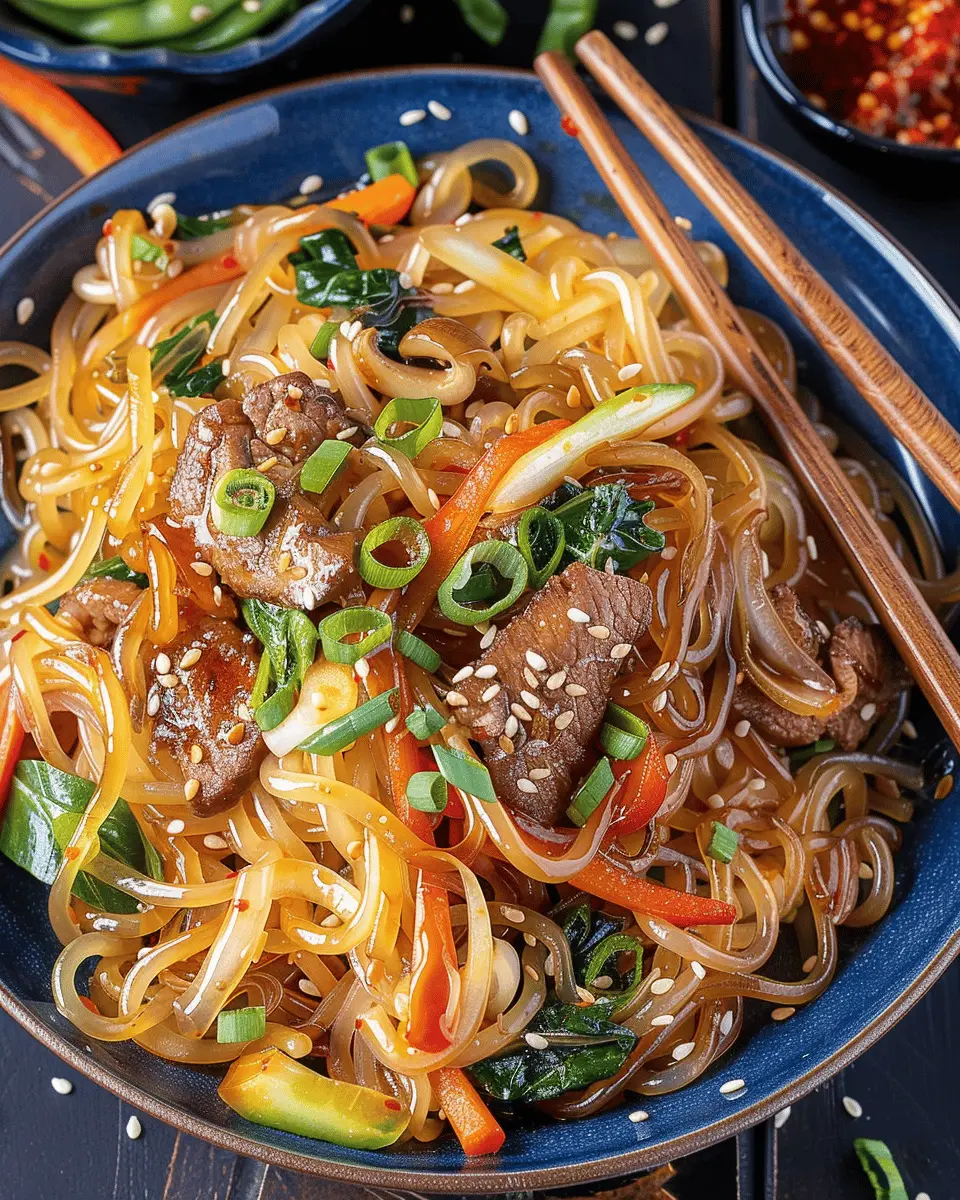
Variations of Japchae
Vegetarian Japchae Options
If you’re exploring ways to enjoy Korean glass noodles while keeping things plant-based, you’re in for a treat! There are countless vegetarian variations. Simply swap out the meats for an array of colorful veggies, such as:
- Bell peppers
- Spinach
- Carrots
- Mushrooms
- Zucchini
To enhance the flavor, consider adding tofu or tempeh for some protein. Marinating the tofu in soy sauce and sesame oil before frying adds a delightful depth that pairs beautifully with the noodles. For some extra texture, you might try using crispy fried shallots on top.
Want more inspiration? Check out Korean Bapsang for additional tips on crafting the perfect vegetarian japchae.
Spicy Adaptations with Gochujang
For those who crave a kick in their Korean glass noodles, incorporating gochujang can elevate your japchae experience significantly. This spicy fermented chili paste adds a depth of flavor that balances perfectly with the savoriness of the soy sauce.
Here’s how to integrate it into your dish:
- Mix with sauce: Create a sauce using gochujang, soy sauce, sesame oil, and a bit of honey for sweetness.
- Drizzle and toss: Cook the vegetables and noodles, then drizzle your spicy sauce over them. Toss well to ensure everything is thoroughly coated.
Not only does this approach add flavor, but it also gives your meal that eye-catching red hue that’s sure to impress. If you’re new to working with gochujang, take your time to adjust the amount to your spice tolerance. A little goes a long way! You can learn more about this versatile ingredient from Serious Eats.
All these variations make it easy to personalize your japchae to suit your palate. Whether you’re a veggie-lover or a spice seeker, the possibilities are endless!
Cooking Notes for Japchae
Common Mistakes to Avoid
When preparing Korean glass noodles, it’s easy to stumble into a few traps. One common mistake is overcooking the noodles, which makes them mushy instead of delightfully chewy. Always follow the package instructions, but check a minute or two earlier—this will help you capture that perfect texture.
Another issue is not seasoning adequately. The dish is a beautiful blend of flavors, so a pinch of salt or soy sauce can really elevate it. Make sure you taste and adjust seasoning along the way.
Tips for Perfecting the Texture of Glass Noodles
To achieve those ideal Korean glass noodles, try soaking them in warm water first before cooking. This softens them without risking mushiness. Furthermore, drain the noodles thoroughly before adding them to the stir-fry.
Pro tip: consider using a mix of vegetables—carrots, bell peppers, and spinach not only add vibrant color but also enhance the texture, creating a more enjoyable eating experience. Want to learn more about Japchae? Check out this Korean culinary guide for additional insights.
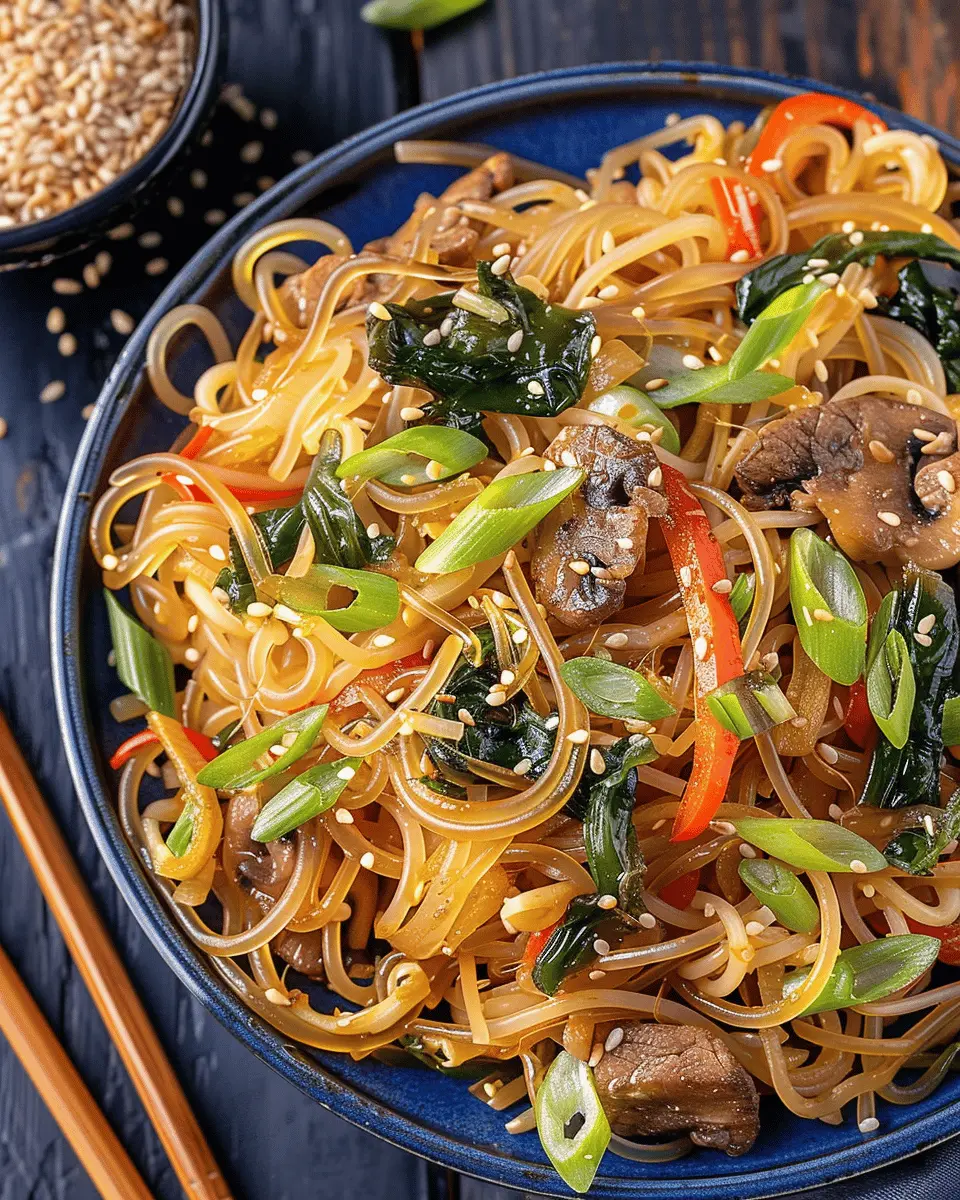
Serving suggestions for Japchae
Pairing ideas for a complete meal
When you’re indulging in Korean Glass Noodles, think about adding a well-rounded selection of sides. Japchae makes a great centerpiece, but it truly shines alongside:
- Korean fried chicken: The crispiness complements the chewy texture of the noodles.
- Kimchi: This iconic side adds tangy spice, balancing the sweetness of the dish.
- Steamed vegetables: Simple greens like bok choy or even roasted broccoli provide a nutritious contrast.
- Tofu or protein options: Consider marinated tofu or sliced chicken ham to elevate the meal further.
These options not only enhance the experience but ensure you’re feeding your body a variety of nutrients.
Presentation tips for visual appeal
Presentation can elevate your Japchae from simple to outstanding. Here are some practical ideas:
- Color variety: Use a mix of colorful vegetables, such as vibrant bell peppers and dark leafy greens to create a visually appealing dish.
- Garnishing: Sprinkle sesame seeds on top for a crunchy texture and a classic Korean touch.
- Layering: Serve Korean Glass Noodles in a shallow dish to showcase the beautiful colors. A drizzle of sesame oil can add a glossy finish.
For more inspiration on serving styles, check out this guide on food presentation techniques. Enjoy your meal!
Time Breakdown for Japchae
Preparation Time
Making Korean Glass Noodles is a delightful experience, but it does take a bit of prep. Expect to spend around 20 minutes chopping vegetables, marinating your Turkey Bacon or Chicken Ham, and getting your ingredients ready. Just think of this as a mini workout for your knife skills!
Cooking Time
Once everything is prepped, the actual cooking is a breeze! You’ll spend about 15-20 minutes cooking everything in a skillet or wok. It’s fascinating to watch the sauce meld together with the flavors of your fresh veggies and noodles.
Total Time
In all, you’re looking at approximately 35-40 minutes from start to finish. If you plan ahead, you can whip this up on a busy weeknight and impress your friends. For more tips on prep time efficiency, check out this article on meal prep strategies that can save you time in the kitchen.
Enjoy creating your own sweet and savory Korean Glass Noodles!
Nutritional facts for Japchae
Calories breakdown
Japchae, or Korean glass noodles, is a delightful dish that’s both hearty and nutritious. A typical serving, about one cup, contains around 140 calories. This makes it a fantastic option for a light meal or side dish that won’t leave you feeling heavy afterward.
Key nutrients
Aside from its appealing taste, Japchae is packed with essential nutrients. The dish primarily consists of sweet potato starch noodles, vegetables like spinach, carrots, and mushrooms, and a choice of protein like delicious turkey bacon or chicken ham. Here’s what makes it special:
- Carbohydrates: Provides energy, ideal for an active lifestyle.
- Fiber: Promotes healthy digestion, with veggies contributing to the daily intake.
- Protein: If you opt for turkey bacon or chicken ham, you’ll add valuable protein to your meal.
For a more in-depth look at the nutritional content of Japchae, the USDA FoodData Central offers great insights into the benefits of ingredients you can incorporate into this dish.
FAQs about Korean Glass Noodles
Are Korean glass noodles gluten-free?
Yes! Korean glass noodles, known as sweet potato noodles or dangmyeon, are typically gluten-free since they’re made from sweet potato starch. However, if you’re dining out or purchasing pre-made dishes, it’s always wise to double-check the ingredients. Some restaurants may add soy sauce or other sauces that contain gluten. If you’re unsure, don’t hesitate to ask your server for clarification!
How can I store leftover Japchae?
Storing leftover Japchae, the popular dish made with Korean glass noodles, is quite simple. Place the leftovers in an airtight container and refrigerate them. They can typically be stored for up to 3 days. When you’re ready to enjoy them again, give the dish a quick stir-fry in a hot pan to refresh the flavors. Just a splash of water or vegetable broth can help rehydrate the noodles and revive the dish.
Can I freeze Japchae for later use?
Absolutely! Freezing Japchae is a great way to have a delicious meal ready for those busy days. To freeze it, make sure your Japchae is completely cooled, then portion it into freezer bags or containers. Be sure to label them with the date! You can freeze Japchae effectively for about 1 to 2 months. When you’re ready to eat, just let it thaw overnight in the fridge, and reheat it in a pan or microwave to bring it back to life.
For more tips and delicious recipes, consider checking out resources like Cooking Light for additional insights into Asian cuisine!
Conclusion on Japanese Glass Noodles
Korean Glass Noodles are a delightful dish that truly showcases the versatility of sweet potato starch noodles. Their unique texture and ability to absorb flavors make them an excellent choice for various recipes. If you’ve never tried making them at home, consider this your friendly invitation to dive in!
With vibrant vegetables and a flavorful sauce, these noodles can be personalized to suit your taste. Don’t hesitate to experiment with ingredients like Turkey Bacon or Chicken Ham for a satisfying meal. For inspiration, you can check out this guide on cooking techniques and flavor pairings. Happy cooking!
Print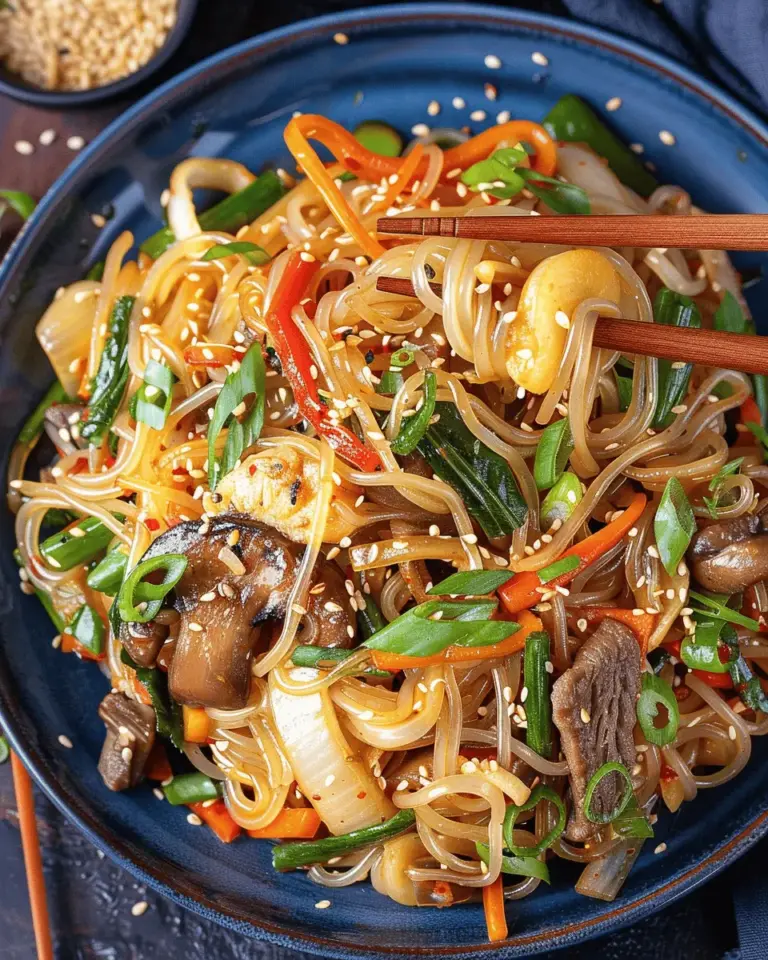
Korean Glass Noodles: Easy Stir-Fry with Turkey Bacon & Veggies
Enjoy a quick and delicious stir-fry featuring Korean glass noodles, turkey bacon, and fresh vegetables.
- Total Time: 25 minutes
- Yield: 4 servings 1x
Ingredients
- 8 ounces Korean glass noodles
- 4 slices turkey bacon
- 1 cup bell peppers, sliced
- 1 cup carrots, julienned
- 1 cup snap peas
- 2 tablespoons soy sauce
- 1 tablespoon sesame oil
- 2 cloves garlic, minced
- 2 teaspoons ginger, minced
- 1 green onion, chopped
Instructions
- Cook the Korean glass noodles according to package instructions, then drain and set aside.
- In a large skillet, cook the turkey bacon until crispy. Remove and chop into pieces.
- In the same skillet, add bell peppers, carrots, and snap peas. Sauté for 5-7 minutes until tender.
- Add garlic and ginger, cooking for an additional minute.
- Stir in the cooked noodles, soy sauce, and sesame oil. Mix well and heat through.
- Top with chopped green onions before serving.
Notes
- For a vegetarian option, omit the turkey bacon.
- You can substitute the veggies with any of your favorites.
- Prep Time: 10 minutes
- Cook Time: 15 minutes
- Category: Dinner
- Method: Stir-fry
- Cuisine: Korean
- Diet: Gluten-Free
Nutrition
- Serving Size: 1 cup
- Calories: 250
- Sugar: 3 grams
- Sodium: 600 milligrams
- Fat: 10 grams
- Saturated Fat: 2 grams
- Unsaturated Fat: 6 grams
- Trans Fat: 0 grams
- Carbohydrates: 30 grams
- Fiber: 4 grams
- Protein: 14 grams
- Cholesterol: 20 milligrams
Keywords: Korean Glass Noodles, stir-fry, turkey bacon, quick meal, easy recipe
